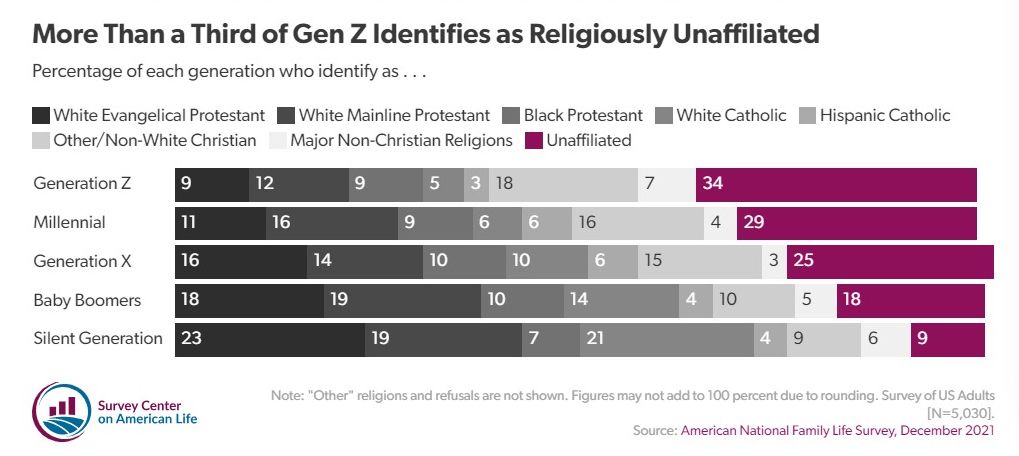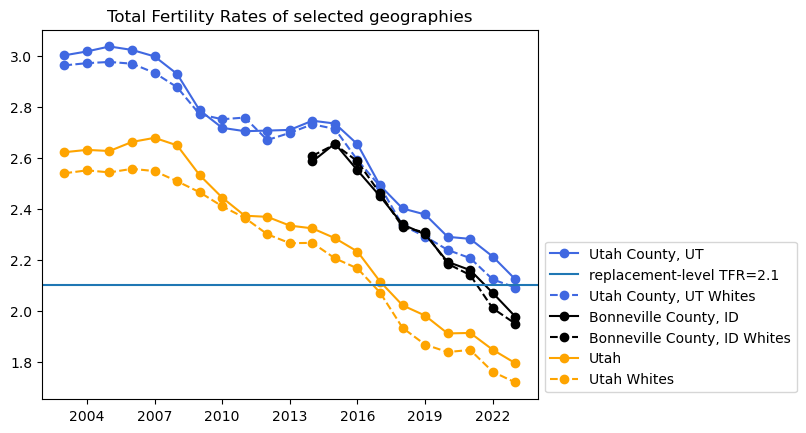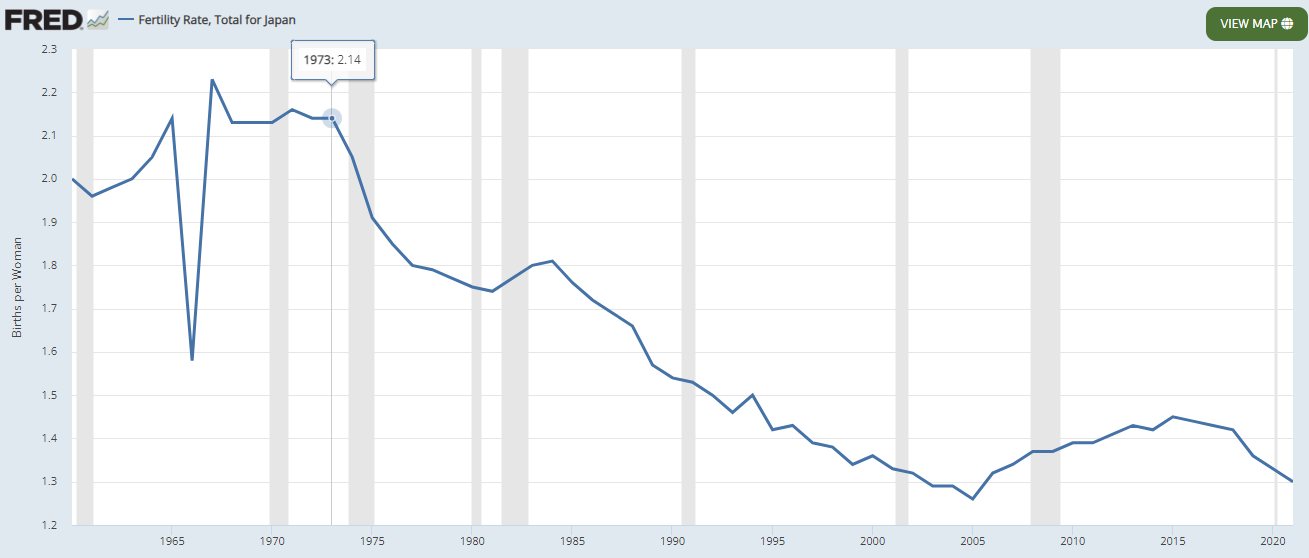Demographic Collapse: Effects of Urbanization
The roots of the demographic decline, specifically urbanization, which has long been linked to reduced fertility rates. History, failed policies and schools of thought, and summary.

In the first two parts of this series on demographic collapse, we examined the urgency of declining fertility rates and reviewed various national responses. The initial post, "Why Should We Care?", detailed the profound impacts of demographic decline on economic vitality and cultural continuity, emphasizing its potential to destroy modern economies and societies. "Several Case Studies" highlighted specific strategies from countries like Hungary, Denmark, and South Korea, ranging from birth rate incentives to family support structures.
Now, we shift focus to the roots of these demographic changes, specifically urbanization, which has long been linked to reduced fertility rates. By examining how urban environments impact family planning and social structures, we aim to understand the broader narrative of demographic decline and identify potential mitigation strategies. This analysis will lay the groundwork for future discussions, where we will propose actionable solutions to address the fertility crisis.
We will start with background on the study of demographics itself. I will walk you though the evolution of the field and explain why most common beliefs about urbanization's effects on fertility are outdated. Lastly, I discuss what we do know about the effects of urbanization on fertility and summarize the problem.
Early Evolution of Urban Fertility Studies
The impact of urbanization on fertility has been acknowledged since, at least, Thomas Malthus's 1798 work, which, while focusing on population growth, also touched on how urbanization affects fertility. Throughout the 19th century, scholars continued to explore this connection.
Academic interest in the topic intensified in the years leading up to World War II. During that time, researchers began directly examining the urban-rural divide. In 1937, Kingsley Davis highlighted urbanization's severe effects on fertility and proposed initiatives to encourage a return to rural life to preserve family structures.

By 1942, A. J. Jaffe, in Urbanization and Fertility, had identified the reduction in fertility among urban populations as a consequence of their higher standards of living and higher aspirations, attributing the decline to a "higher plane of living." His observations, reflecting a belief in the superiority of urban lifestyles, continue to influence the discourse today.
Fertility continued to decline, but its effects may have been offset by the parallel decline in infant mortality. It wasn't until just prior to the Great Depression that urbanization surpassed 50%, a milestone that might have come with economic forces that played a hand in forming that Depression.
Early analyses linked urbanization's impact on fertility to factors like industrialization, population density, and education levels. In a pivotal 1945 study, Notestein combined those macroeconomic factors with the reduced need for child labor in urban areas as compared to rural settings, noting that "fertility was necessarily high in traditional rural, agricultural societies in order to provide needed labour and to offset high mortality."
Research in the 1960s conclusively found a significant rural-urban fertility disparity. Studies showed that first-generation migrants from rural to urban areas maintained higher fertility rates than native urbanites, but by the second generation, this difference vanished, indicating a rapid assimilation of urban fertility norms globally.
While fertility studies in other countries had been ongoing for decades, Chinese population research only began to catch up in the 1980s and 90s. By 1981, fertility rates in China’s rural areas remained high at 2.9, while urban rates had dropped to 1.4. This urban-rural divide followed global patterns, but China’s case of rural-to-urban migration was unique.
A 1997 study showed that unlike other countries, the fertility of Chinese rural-to-urban migrants was lower than that of native urban populations, contributing to China's accelerated demographic decline. As China industrialized, rural workers moving to urban centers further reduced urban fertility rates instead of bolstering them as in most other nations.
This trend was due to migrants’ low wages and transient lifestyles. Many returned to rural homes for festivals and planned to marry within their rural communities. Additionally, discrimination against migrants in urban areas further discouraged family formation, as native urbanites were reluctant to marry economically disadvantaged migrants.
First Attempts to Solve Fertility Decline
For decades, the decline in fertility due to urbanization was seen as natural, with the belief that people could simply choose to have children or move to rural areas with higher fertility rates. This view assumed sustained high fertility in rural areas and a continuous influx of young adults into cities. However, as rural fertility also began to decline, this perception changed.

As falling fertility rates in both urban and rural areas became apparent it morphed into a problem for policymakers to solve. This also happened to coincide with the rise of bureaucratic States in the decades after World War II and their penchant for intervention.
They began by framing the problem differently. Instead of inherent macroeconomic factors, the managerial class blamed things they could control, like a lack of family planning services and social connections between friends and family. They could provide the family planning service and maternity leave, as well as strict work regulations and discrimination laws. However, as with all government intervention, there are unintended consequences. Family planning led to people delaying marriage and children, prioritizing personal and financial stability. Counterintuitively, family planning inadvertently took the place of family making.
This belief in the necessity of family planning services persists today, despite its negative results. Many nations, facing ongoing demographic decline, continue to rely on central planning solutions, including comprehensive family planning initiatives and work/life balance policies. However, these strategies have failed to achieve the desired outcomes in every case and, in many cases, have likely accelerated the decline.
A Wasted Decade
The family-planning approach proved ineffective but remains popular among the public and bureaucrats to today. There was, however, a decade where the clear line of demographic research, data and policy were stalled. In 1986, Ansley Coale's The Decline of Fertility in Europe, a two-decade study from Princeton University, found no strong correlation between industrialization, urbanization, and declining fertility rates. The findings challenged the fundamental established fact from decades of research of a direct rural-urban fertility divide, describing the relationship as "neither direct nor deterministic."
This impossible revelation shocked the academic community, contradicting decades of established research findings. Criticisms of the study's data did emerge identifying errors, but it took over three years, fast perhaps in academic time, but too slow in real time. The initial damage was done, redirecting the field toward new lines of inquiry, inadvertently paving the way for Cultural Marxist influences.
The new reasoning suggested that if urbanization wasn't the root cause, cultural factors in urban areas must be. This led to the notion that low fertility, which first appeared in urban progressive cultures and spread to rural areas, was somehow due to an evolutionary process and so must be superior. The claim was progressive culture and ideology were superior and "diffused" into less fit traditional cultures.
This paradigm shift moved the discourse from tangible economic factors—like fewer children needed in urban labor markets, cost of living, and social bond erosion—to cultural elements like contraception use and secular values. It suggested that declining fertility was a feature of a culturally superior model, aligning with progressive climate activism and fears of overpopulation. This model justified low fertility as beneficial for saving the planet and advancing societal progress.
Despite the acceptance of cultural explanations in progressive circles, critical contradictions remain. First, the decline in urban fertility predates modern progressive culture and secular societies by over 150 years. Second, countries like Japan have had below-replacement fertility rates well before the pill was legalized. Third, progressives also overlook the risks of sustained low fertility, which threaten the stability of complex societies by undermining economic vitality and straining social systems (see my previous post). This focus on cultural evolution led to government funding things like gender equality policies that simply compounded the fertility decline.
Secularization
The diffusionist view also claims secularism as a superior trait of progressive culture, positing that as cultures evolve, they become more secular, leading to smaller families. As religiosity falls, it is assumed fertility falls. However, this overlooks the historical role of urban centers as religious hubs. Urban culture is not necessarily secular.
Historically, cities have been centers of both administrative power and religious life. Urban centers have been crucial for religious practice and belief, including major civic and architectural undertakings, the inspiration of art, the construction of monumental temples and cathedrals, and the spreading of religious texts. Gobekli Tepe, the oldest known monolithic settlement, is thought to be for religious ceremonies. Similarly, Sumerians built ziggurats, Egyptians built pyramids, and Athenians built the Acropolis—all centers of worship. Progressive logic assumes urbanization favors modern secular beliefs, but history shows cities as strongholds of religion.
Indeed, in the US, church membership was steady until 2000, with a dramatic drop in the last two decades. This indicates that the fertility crisis predates the recent decline in church membership and the rise of extreme Cultural Marxism.

It's important to distinguish between church membership and actual church attendance. In the US, while roughly 40% claim church attendance, but in Europe, the figures are much lower, as are their fertility rates. In Germany, weekly church attendance is around 4% for Catholics and 3% for Protestants, with only a slight increase to 9% for Catholics who attend "regularly" rather than weekly. While self-reported affiliation in Europe is higher at 78%, this does not translate to prioritizing religion in daily life.
Among US Millennials, born between 1981 and 1996, nearly one-third report having no religious affiliation.

In another survey from American Survey Center, showed Millennials reporting no religious affiliation at 29% and Gen Z 5 points higher at 34%.

Note: a member of our Telegram community, "Someone Else", offered this correction to this section. Paraphrasing him, 'It is not that people are getting less religious, they are simply treating Climate and Cultural Marxism as their religion. Those religions are very dominant in urban areas. If we consider these properly as religions, the long history of cities being religious hubs is maintained, and perhaps the correct context of these belief systems can be more fully appreciated.'
Stricter religious sects like the Mormons, Jews, and Amish are traditionally linked to higher fertility rates, but this is changing, providing evidence against the connection of religion per se and high fertility rates. Utah, predominantly LDS, now reports fertility rates below replacement level. In Israel, both religious and secular populations maintain above replacement-level fertility, despite Israel's lower self-reported religiosity compared to countries with much lower fertility, like Greece. Only 55% of Israelis identify as religious, and only 10% as ultra-orthodox, while in Greece up to 90% identify as Greek Orthodox and 76% reported that Christianity "defines their nationality." Of the groups often cited, only the Amish continue to exhibit high fertility due to unique religious mandates.

These observations challenge the diffusionist view that attributes fertility decline primarily to contraceptives and secularism, meaning these are simply aspects of modern progressive ideology rather than direct causes. The significant role of women in society is another complex aspect of this ideology, meriting detailed exploration in another post.
The 1990s were turbulent for demography, dominated by progressive thought. However, the field was revitalized by external commentators who reintroduced practical perspectives, steering it away from an ideological dead end.
Economist Demographers
In the 1990s, diffusion theory dominated demographic studies, risking ideological capture. However, economists began engaging with the field, offering new insights that challenged prevailing theories and started to repair the damage done by diffusionists.
Economists like Lant Pritchett brought critical thinking back to the fore in the late '90s and early 2000s by refuting the idea that the availability of contraception was driving the decline in fertility. Utilizing data from the World Fertility Survey and the Demographic and Health Survey, Pritchett argued that fertility closely correlates with the demand for children, which is influenced by broader developmental factors rather than family planning efforts alone. He famously critiqued the overemphasis on family planning services in demographic studies, pointing out that many analyses suffered from fundamental analytical errors.
Pritchett emphasized that the spread of birth control was a response to declining demand for children, not a cause. Access to contraception does not cause changes in demand, changes to demand caused by deeper economic factors, leads to an increase in access to contraception. In other words, people didn't use contraception because they were enlightened progressives, they were just following market incentives.
In 1999, economists Thomas and Price concluded that, "the role of contraceptive diffusion has been exaggerated in the dominant theoretical position," and added "economic growth and the distribution of its product have been unjustifiably neglected" in the study of demographic transition. This shift refocused attention on economic variables over cultural explanations.
In 2002, Potter and Schmertmann analyzed demographic transitions across 518 Brazilian micro-regions, contrasting rural and urban areas. Their study covered the transition from high fertility in the 1960s to near replacement levels by 1991, highlighting differences in fertility decline related to urbanization and economic conditions. Their findings emphasized a clear relationship between economic circumstances and fertility rates, challenging the progressive diffusion model that had dominated demographic discourse.
Economists revisited old data from the 19th and early 20th centuries, concluding a strong connection between fertility decline and economic factors like urbanization. By the 2000s, the original economics model, emphasizing urbanization and development, regained prominence after more than a decade lost to diffusion theory.
The documentary Birth Gap by Stephen J. Shaw presents recent demographic research, arguing that fertility declines are gradual but accelerate during economic crises. A notable example is 1973 Japan. Before the oil shock in October 1973, Japan's economy was booming, and fertility rates were above the 2.1 replacement level. The oil crisis, severely impacting Japan's energy-dependent economy, caused a significant drop in birth rates nine months later, pushing them below replacement levels, from which they never recovered.

Child Mortality
For completeness, I will briefly touch on some ideas about child mortality, the frequency of deaths in children under five, which clearly influences fertility rates. High child mortality often leads to higher fertility rates to ensure enough children survive to adulthood. For example, ancient Rome urban fertility rates are estimated to have been between 6 - 9 to simply maintain or slightly grow population.
Studies have shown that infant and child mortality rates were noticeably higher in urban areas compared to rural ones in pre-industrial times due to poor sanitation, overcrowding, and the rapid spread of infectious diseases. Therefore, it becomes clear why the academic study of urbanization's effect on fertility started in the 19th century, when the societal effects of a decreasing child mortality rate began to be felt.
Urban areas now offer better access to medical facilities, clean water, and education, contributing to lower child mortality rates. Consequently, parents in modern urban settings tend to have fewer children, assured of their survival.
Conclusion
Understanding the effects of urbanization on fertility rates has been a long road, and it still has many undiscovered causative factors. The baseline connection between urbanization and lower fertility developed as industrialization helped lower child mortality rates, slowly over generations, removing the incentives to have more children.
Throughout the 20th century, fertility rates continued to fall as the benefits of industrialization spread to every part of the world. Along with basic infrastructure, healthcare, and sanitation, other macroeconomic factors took hold like population density, cost of living, and a rising materialist and narcissistic culture.
The initial policy responses to declining fertility rates were from a bureaucratic perspective, like family planning, government subsidies, and more, which were likely counterproductive, pushing birth rates even lower. But at least they were trying. By the 1990s, the diffusionists had taken over and didn't even think fertility decline was a problem, instead worshipping the climate and equity.
I showed that it isn't secularism, access to contraception, or progressive superiority that explains this decline, though their policies very likely exacerbated the problem. The reality is that urbanization + industrialization, with its associated economic and social transformations, has had a profound impact on fertility rates. Solutions must be multifaceted, incorporating economic realities, cultural norms, and policies that genuinely support family creation.




